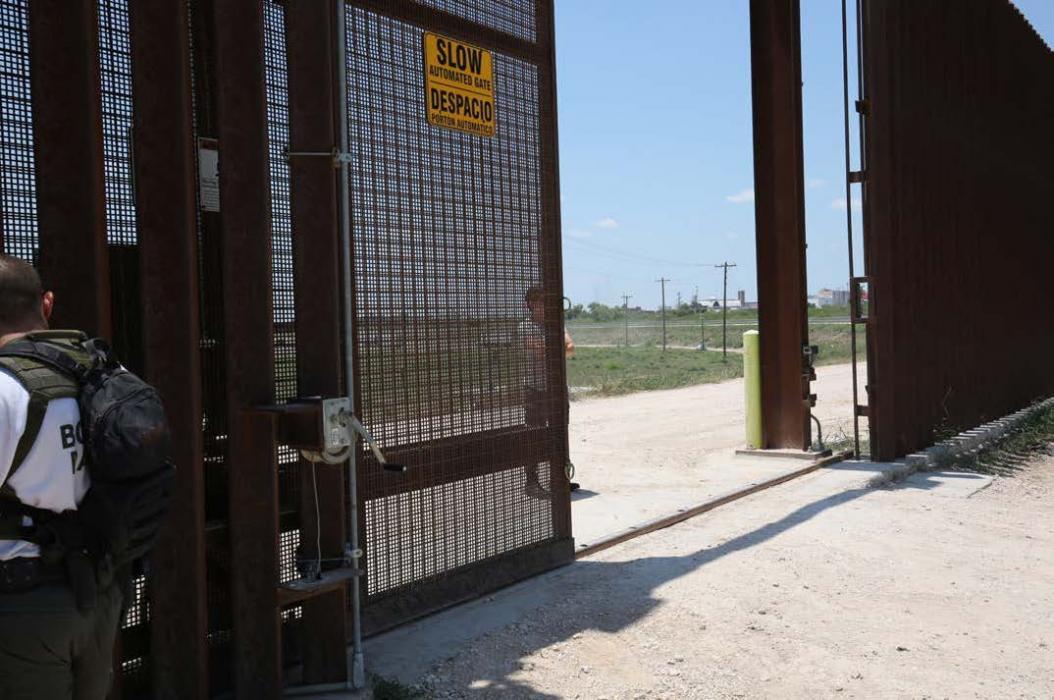
The Department of Homeland Security (DHS) has issued a waiver, which will ensure expeditious construction of new border wall gates located within Cameron County, Texas. The gate construction project includes the installation of automated border wall gates, associated equipment, and site improvements at current openings in the existing barrier in the U.S. Border Patrol’s (USBP) Rio Grande Valley (RGV) Sector.
The waiver was published in the Federal Register on September 30, 2019. U.S. Customs and Border Protection (CBP), in partnership with the U.S. Army Corps of Engineers (USACE), will begin construction as early as September 30, 2019. The contract for this project was awarded to Gideon Contracting, LLC on July 31, 2019.
The geographic scope of this waiver covers the project sites located within the area of responsibility of the McAllen and Weslaco Border Patrol Station’s (BPS) in Hidalgo County, Texas and in the Harlingen BPS within Cameron County, Texas. The gates will be located on the U.S. International Boundary and Water Commission levee at existing levee ramps. Once installed, the gates will serve as a persistent impediment to smuggling organizations while still allowing river access for property owners, USBP, other local/state/federal officials, and local emergency responders.
This project is funded by CBP’s Fiscal Year 2017 (FY17) appropriation and is not undertaken pursuant to the National Emergency Declaration, 10 U.S.C § 284, 10 U.S.C. § 2808, nor does it draw from any other source of funding, including appropriations available to the Department of Defense (DoD).
Based on language in CBP’s FY19 appropriation, border wall construction will not take place within the Santa Ana National Wildlife Refuge, La Lomita Historical Park, Bentsen-Rio Grande Valley State Park, within or east of the Vista del Mar Ranch tract of the Lower Rio Grande Valley National Wildlife Refuge, or the National Butterfly Center.
This waiver is pursuant to authority granted to the Secretary of Homeland Security by Congress and covers a variety of environmental, natural resource, and land management laws. Congress provided the Secretary of Homeland Security with a number of authorities necessary to carry out DHS’s border security mission. Section 102(a) of IIRIRA provides that the Secretary of Homeland Security shall take such actions as may be necessary to install additional physical barriers and roads in the vicinity of the United States border to deter illegal crossings in areas of high illegal entry into the United States.
In Section 102(b) of IIRIRA, Congress mandated the installation of additional fencing, barriers, roads, lighting, cameras, and sensors on the southwest border. Finally, in Section 102(c) of IIRIRA, Congress granted to the Secretary of Homeland Security the authority to waive all legal requirements that the Secretary, in the Secretary’s sole discretion, determines necessary to ensure the expeditious construction of the barriers and roads authorized by Section 102 of IIRIRA.
While the waiver eliminates DHS’ obligation to comply with various environmental laws with respect to the areas covered in the waiver, DHS remains committed to the protection of the nation’s important natural and cultural resources. DHS has been, and will continue coordinating and consulting with other federal, state, and local resource agencies and other interested stakeholders to ensure that potential impacts to the environment, wildlife, and cultural and historic resources are analyzed and minimized, to the greatest extent possible.
RGV is the busiest Sector in the nation and accounts for approximately 40% of the illegal alien apprehensions and, for the FY to date, ranks first in seized cocaine and marijuana along the southwest border. The majority of its activity is occurring in areas where RGV has limited infrastructure, access and mobility, and technology.
CBP continues to implement President Trump’s Executive Order 13767 – also known as Border Security and Immigration Enforcement Improvements – taking steps to expeditiously plan, design, and construct a physical wall using appropriate materials and technology to most effectively achieve operational control of the southern border.


Chattooga Schools
GNTC honors Electrical Lineworker graduates for fall 2024

Chattooga Local News
Secretary Raffensperger Announces the “Georgia Plan” for Federal Election Reform

Chattooga Local News
Georgia Auto Brokers’ Jason Vasser to Provide Free Thanksgiving Meal for Community

Bulloch Public Safety
11/04/2024 Booking Report for Bulloch County

Bulloch Public Safety
10/21/2024 Booking Report for Bulloch County

Bulloch Public Safety
10/17/2024 Booking Report for Bulloch County

Bulloch Public Safety
10/28/2024 Booking Report for Bulloch County

Bulloch Public Safety
11/07/2024 Booking Report for Bulloch County





